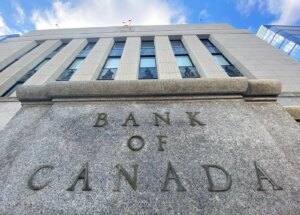The Case Against Gold Reserves: Why Canada and Other Economies are Moving Away

A Tough Question for Canada
A concerned Canadian reader recently posed an interesting question regarding Canada’s lack of significant gold reserves at the Bank of Canada (BoC). With the USA preparing for a much-awaited audit of its gold reserves at Fort Knox, why has Canada taken a different path? It’s a valid inquiry, especially among many seasoned investors and retirees who are witnessing shifts in global monetary policies.
The Answer: Strategic Economic Choices
Canada’s decision to minimize its gold reserves is rooted in a deliberate policy that has evolved over decades. Here are the key reasons driving this choice:
1. Storage and Security Costs
Maintaining physical gold is not just about acquiring it; the ongoing expenses of secure storage and insurance need consideration. These costs can accumulate, making gold an expensive asset to hold.
2. Opportunity Costs
Gold is often viewed as a “safe haven” asset, but it does not yield interest or dividends. By holding interest-bearing assets such as foreign government bonds (like U.S. Treasuries and German Bunds), the Bank of Canada believes it can achieve better financial returns.
3. Focus on Liquid Assets
Foreign exchange reserves (primarily U.S. dollars, euros, and yen) provide Canada with the liquidity to intervene directly in currency markets. This flexibility helps stabilize the Canadian dollar and supports its monetary policy.
The Historical Context: A Shift in Strategy
Beginning in the 1980s, Canada saw gold prices peak at $875 per ounce, leading to a sell-off that has continued over the decades. The pace picked up notably in the 1990s and early 2000s, spearheaded by Finance Minister Paul Martin and Governor Gordon Thiessen. By 2016, Canada’s significant gold holdings were all but gone, reduced to negligible amounts—only 77 ounces were reported in 2022. The rationale? The costs, lack of yield, and the ease of accessing liquid assets outweighed the traditional benefits of holding gold.
The Global Landscape: Lessons from Others
Canada isn’t alone in this narrative. The UK faced similar criticism when former Chancellor Gordon Brown authorized the sale of nearly half of its gold reserves between 1999 and 2002, at a time when gold prices were hitting two-decade lows. Known as the "Brown Bottom," this decision is often cited as a pivotal mistake, as gold prices soared subsequently, leaving the UK potentially billions of pounds in unrealized value.
What Can Investors Learn?
Understand Diverse Financial Strategies: The Canadian approach illustrates a modern shift away from traditional gold holdings in favor of more dynamic assets. As an investor, diversifying your portfolio beyond precious metals to include various asset classes could yield higher returns in today’s marketplace.
Be Mindful of Economic Signals: As economies navigate post-pandemic recovery and fluctuating inflation rates, keeping an eye on the policies of central banks like the BoC can provide insights into market trends and opportunities.
Conclusion
Canada’s approach to gold reserves is a compelling case study in modern economic policy. While the absence of gold may seem counterintuitive, it’s a calculated decision reflective of broader fiscal strategies aimed at optimizing returns and maintaining liquidity. At Extreme Investor Network, we strive to provide insightful analyses like these to inform and empower our readers in making educated investment decisions.
Stay tuned for more updates and expert insights into the ever-evolving financial landscape!

